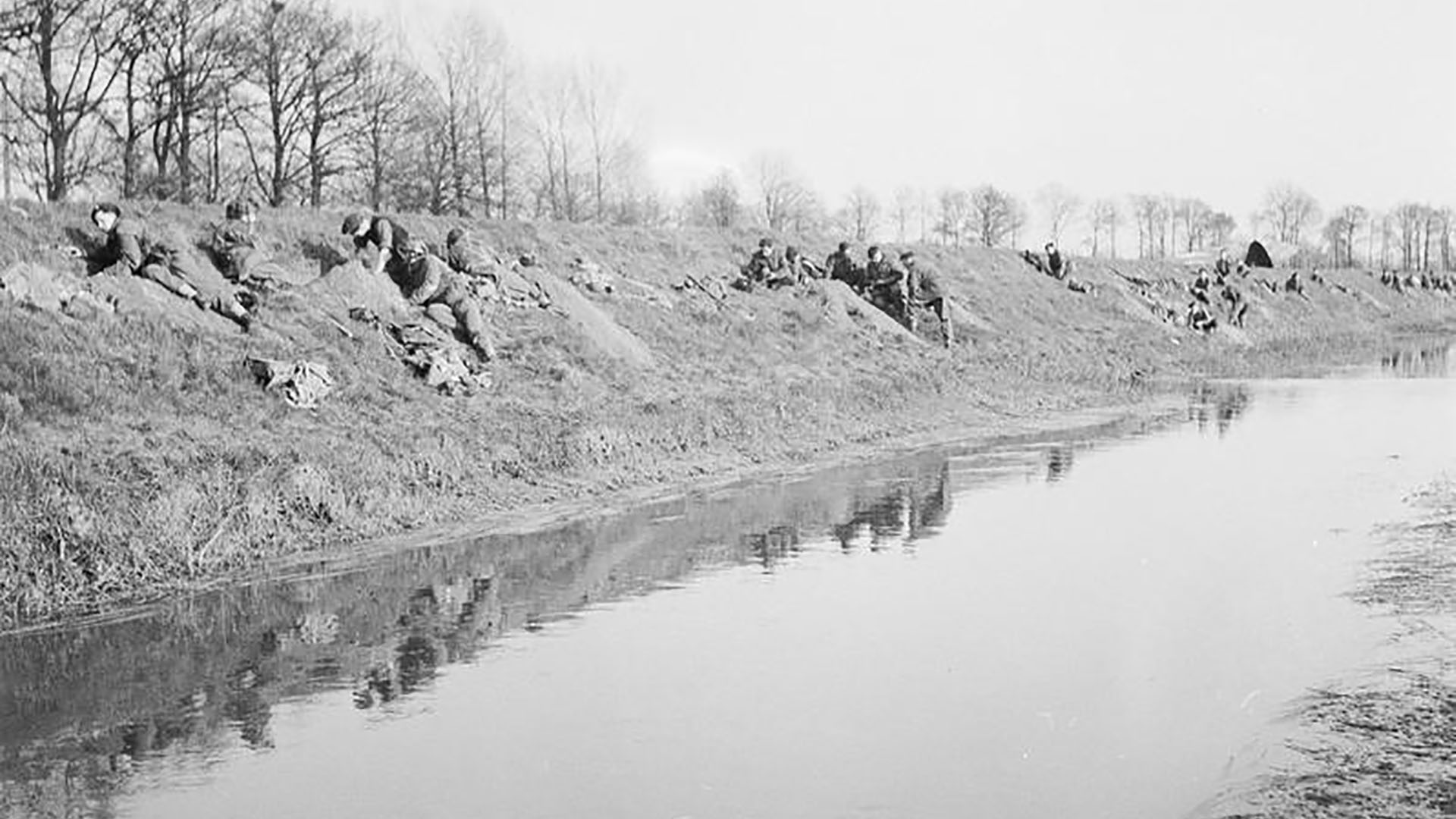Regimental Sergeant Major William McConnell served with 1st Battalion Royal Ulster Rifles during World War Two. He rose through the ranks of the RUR serving in the Second World War and in Korea. He left the army in 1969 as a Regimental Sergeant Major and later received an MBE.
William McConnell hailed from Ballyclare, Co. Antrim. To family, friends, and all he served alongside, he was Bill. In 1941, at the age of 17 years old, he forged a birth certificate to enlist in the British Army.
Aged 19 years old, he took part in the D-Day landings as part of 6th Airborne Division landing on 6th June 1944 near Ranville, Normandy, France. Landing some 35 miles behind enemy lines, his unit faced an SS Panzer Unit. Despite suffering heavy casualties, they held the German unit and forced its withdrawal.
We were the only regiment in the British Army who sent two battalions in on D-Day and I thought it was a great shame that there was nothing to remember those who sacrificed their lives.
Bill McConnell interviewed in The Newsletter in 2013.
We Fought On D-Day
During the battle for the village of Ranville, a German sniper opened fire on McConnell’s battalion from the church bell tower. Bill took out the sniper despite not having a sniper rifle of his own to do so. Four men of the Royal Ulster Rifles died that day. Their graves are in the church graveyard rather than the nearby war cemetery. Alongside them lies the German sniper, name still unknown all those years later.
Having survived the Normandy campaign, McConnell returned to England in September 1944. From there, the Rifles went to Belgium to halt the German advances in The Ardennes.
In March 1945, Bill took part in the Rhine landings and suffered shrapnel wounds as German gunners shot down around 90% of the Rifles’ gliders. The plywood gliders with cellophane windows were no match for German anti-aircraft guns.
It was terrifying. There was awful confusion inside the glider… we lost 66 men in 10 minutes.
Bill McConnell interviewed in The Newsletter in 2013.

Imperial War Museum Photo: BU 2308 (Part of the War Office Second World War Official Collection). British glider troops of the Royal Ulster Rifles, 6th Airborne Division digging in on the banks of the River Issel after landing in March 1945. Photo taken by Sergeant Christie - No 5 Army Film & Photographic Unit.
Return to Normandy
Bill first returned to Normandy for the 50th anniversary of the landings in June 1994.
While there, he decided to raise funds towards erecting a permanent memorial. He exchanged a bottle of Bushmills Whiskey in return for a small piece of land from a French farmer. A stonemason from Ballymena, Co. Antrim made the journey to Normandy and work began on two memorials. A memorial to 1st Battalion Royal Ulster Rifles now stands at Longueval. At Sword Beach, another commemorates 2nd Battalion.
On each return to Normandy, Bill lays a cross at the grave of those four men in the Ranville churchyard. He also lays a cross on the grave of the German sniper. His belief is that the German was doing his job, just as they were.
In 2004, William McConnell took part in a BBC Northern Ireland / Doubleband Film production called ‘We Fought On D-Day’. He appeared alongside veterans including Stanley Burrows to tell their personal stories of D-Day. In 2013, he attended the opening of a D-Day display at the Royal Ulster Rifles Museum in Belfast, Co. Antrim. He spoke to museum staff, volunteers, other veterans, and visitors about his time with the Rifles in World War Two and Korea.